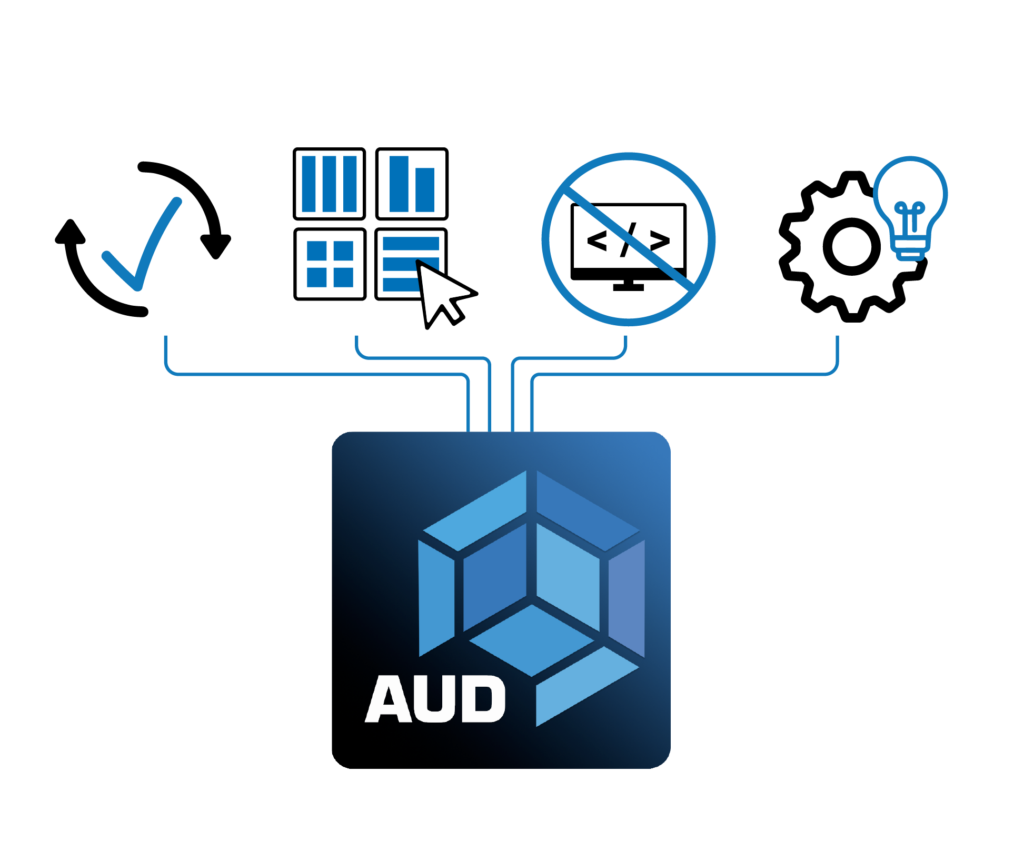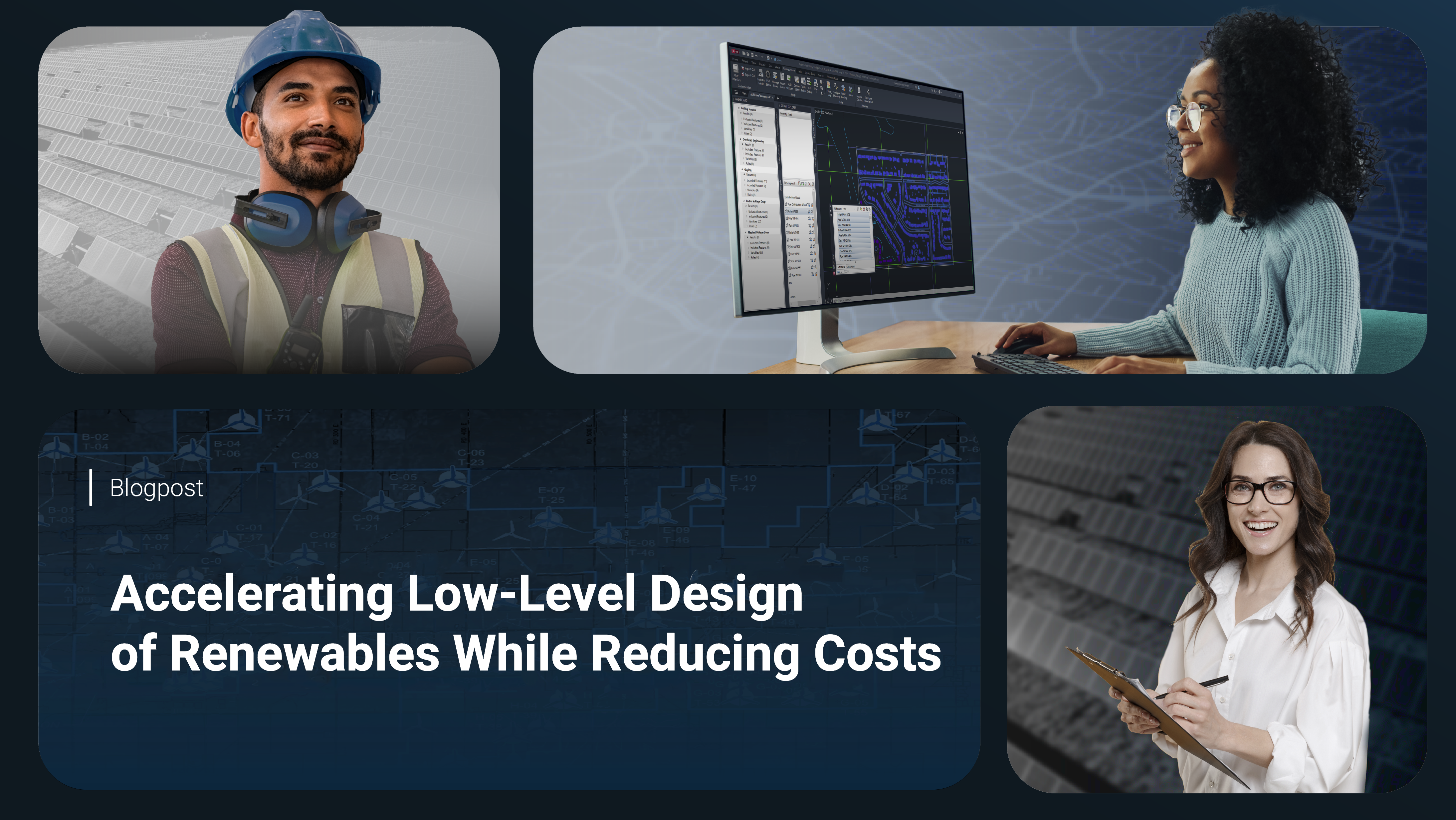How SBS software speeds up the design process and reduces construction errors.
With the dramatic growth and demand for renewable energy sources, teams tasked with designing and building these complex projects face a unique set of challenges. However, as with all challenges, this also provides an exciting opportunity for innovation and advancement in the sector. From navigating local engineering standards to meeting the requirements of a diverse set of project stakeholders, the path to successful renewable infrastructure can feel like traversing a minefield, but it’s a minefield that can be conquered with the right tools.
The right design tool doesn’t just check a box for completing a design or staying within budget—it integrates seamlessly into existing workflows, providing real-time data and compliance checks that do not limit creativity but enhance it. SBS Intelligent Design Platform focuses on the Low-Level Design (LLD) part of the solar infrastructure design process, creating detailed construction-ready prints with the correct standards, materials, and intelligence to support your workflows.
Improving Design Productivity and Quality
SBS develops innovative solutions that align the tools and automation designers seek with the financial efficiency that executives demand. A 2017 study by the Saïd Business School at Oxford University highlighted how even a 1 percent budget reduction achieved through better technology and operations could save the construction industry ~$100 billion annually.1 2 This insight presents a compelling case for investing in advanced tools to streamline processes and reduce expenses.
Joe Cronin, a Solutions Consultant at SBS, emphasizes the necessity of evolving beyond traditional design methods. With his extensive technical and infrastructure design background, Cronin has been instrumental in helping utilities and engineering firms understand the benefits of intelligent design software. He notes the engineering and construction industries’ longstanding reliance on manual processes and 2D design, which, while reliable, are being outpaced by the demands of today’s complex projects. “Transitioning towards 3D and automated processes is not just innovative but essential for staying ahead in a competitive landscape,” Cronin remarks. “We hear repeatedly that to take that step, the solution needs to make the transition feel less like a leap and more like a smart, strategic step forward. SBS’s intelligent design software does just that.”
These considerations are especially true in the solar sector, where comprehensive engineering planning tools and government oversight demand specialized tools capable of handling the intelligence required for design.
For service providers, asset owners, and professionals in the AEC (Architecture, Engineering, and Construction) to EPC (Engineering, Procurement, and Construction) fields, SBS has released a solar template for Automated Utility Design™ (AUD), an Intelligent Design Platform that directly addresses the industry’s call for greater efficiency and higher quality in design. AUD utilizes 3D model-based design and enhances productivity with powerful automations, all within a highly configurable and user-friendly AutoCAD®-based interface.
Adapting to Solar Design Requirements
Solar projects have specific requirements, which include extensive upfront engineering and the need to comply with rigorous government requirements.

1) Engineering Requirements: All engineering work must be completed early to facilitate seamless permitting.
2) Government Oversight: Projects are subject to significant government oversight, ensuring compliance with strict regulations.
3) Standards Compliance: The nature of solar projects demands adherence to standards.
AUD uses the output from many common solar planning tools to create low-level designs, including bills of materials and construction prints. It also automates portions of the design to drive productivity while building a high-fidelity 3D model in the background. This 3D model maintains accuracy throughout the design process and is the basis for Building Information Modeling (BIM), making approval drawings easier to understand and improving construction.
Embracing Intelligent Design with AUD
Cronin often describes projects in AUD as “living designs,” a concept that sets the platform apart from other available options. This approach keeps the design process dynamic, allowing for real-time feedback and continuous validation through AUD’s configurable template and rules engine. For Joe, it’s like seeing the project take on a life of its own, constantly adapting and improving with each phase, from planning to construction management. This ensures efficiency and compliance are built into the project’s DNA, evolving as the project progresses.
Within the renewables design cycle, AUD aids in the low-level design tasks and streamlines the creation and approval of necessary construction permits. By applying validations and standards during the design phase, AUD can help reduce construction errors and inconsistencies.

The core of AUD’s effectiveness is its suite of features:
- auto-validation,
- highly configurable templates,
- a no-code rules engine,
- and an intelligent, model-based design framework.
AUD’s capabilities significantly reduce or eliminate rework and the risks typically associated with traditional or legacy manual workflows. Optional configurable interoperability with systems such as asset or work management (EAM/WMS), GIS, and mobile tools further increases the utility of AUD, reducing change management demands and improving the user experience with its CAD-based interface.
These advancements streamline project workflows and enhance design accuracy, leading to more reliable permitting packages and reduced environmental impacts. An industry insider underscored the value of AUD, noting, “[having] a configurable tool like AUD would be a no-brainer when the productivity gains were visualized.”
Aligning Design with Environmental Goals
With BIM and support for digital twins, AUD can be a powerful ally in reducing carbon footprint.
- BIM workflows are often required for designing and integrating renewable energy systems. They provide more accurate construction insights and thus reduce errors. This precision helps avoid costly and resource-intensive corrections, aligning project outcomes with sustainability standards.
- Having the ability to support digital twins extends the benefits of BIM workflows by accurately representing the behavior and characteristics of a physical feature or network. This allows for enhanced data gathering, scenario simulation, and issue detection, leading to proactive environmental management and reduced impact throughout the project’s lifecycle.3
Conclusion
AUD’s value proposition as a leading solution for low-level design of renewable infrastructure is clear. It offers unparalleled automation and efficiency, substantial labor reduction over traditional methods, and alignment with environmental and sustainability goals. Design teams equipped with AUD can ensure their projects are efficient, cost-effective, and accurate, contributing to the broader goal of sustainability.
Additional Reading
Sources:
- https://www.economist.com/business/2017/08/19/efficiency-eludes-the-construction-industry ↩︎
- https://www.transect.com/blog/top-9-challenges-epcs-face ↩︎
- https://thebimengineers.com/blog/view/bim-and-renewable-energy-systems-streamlining-project-management-and-optimizing-sustainability#:~:text=The%20Intersection%20of%20BIM%20and%20Renewable%20Energy%20Systems ↩︎




